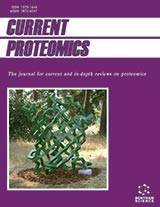Abstract
The generation of a correlation matrix for set of genomic sequences is a common requirement in many bioinformatics problems such as phylogenetic analysis. Each sequence may be millions of bases long and there may be thousands of such sequences which we wish to compare, so not all sequences may fit into main memory at the same time. Each sequence needs to be compared with every other sequence, so we will generally need to page some sequences in and out more than once. In order to minimize execution time we need to minimize this I/O. This paper develops an approach for faster and scalable computing of large-size correlation matrices through the maximal exploitation of available memory and reducing the number of I/O operations. The approach is scalable in the sense that the same algorithms can be executed on different computing platforms with different amounts of memory and can be applied to different bioinformatics problems with different correlation matrix sizes. The significant performance improvement of the approach over previous work is demonstrated through benchmark examples.
Keywords: Bioinformatics computing, correlation matrix, memory management, phylogenetic analysis, scalable computing.
Current Bioinformatics
Title:Optimizing I/O Cost and Managing Memory for Composition Vector Method Based on Correlation Matrix Calculation in Bioinformatics
Volume: 9 Issue: 3
Author(s): Anaththa P.D. Krishnajith, Wayne Kelly and Yu-Chu Tian
Affiliation:
Keywords: Bioinformatics computing, correlation matrix, memory management, phylogenetic analysis, scalable computing.
Abstract: The generation of a correlation matrix for set of genomic sequences is a common requirement in many bioinformatics problems such as phylogenetic analysis. Each sequence may be millions of bases long and there may be thousands of such sequences which we wish to compare, so not all sequences may fit into main memory at the same time. Each sequence needs to be compared with every other sequence, so we will generally need to page some sequences in and out more than once. In order to minimize execution time we need to minimize this I/O. This paper develops an approach for faster and scalable computing of large-size correlation matrices through the maximal exploitation of available memory and reducing the number of I/O operations. The approach is scalable in the sense that the same algorithms can be executed on different computing platforms with different amounts of memory and can be applied to different bioinformatics problems with different correlation matrix sizes. The significant performance improvement of the approach over previous work is demonstrated through benchmark examples.
Export Options
About this article
Cite this article as:
Krishnajith P.D. Anaththa, Kelly Wayne and Tian Yu-Chu, Optimizing I/O Cost and Managing Memory for Composition Vector Method Based on Correlation Matrix Calculation in Bioinformatics, Current Bioinformatics 2014; 9 (3) . https://dx.doi.org/10.2174/1574893609666140516005327
| DOI https://dx.doi.org/10.2174/1574893609666140516005327 |
Print ISSN 1574-8936 |
| Publisher Name Bentham Science Publisher |
Online ISSN 2212-392X |
 19
19
- Author Guidelines
- Bentham Author Support Services (BASS)
- Graphical Abstracts
- Fabricating and Stating False Information
- Research Misconduct
- Post Publication Discussions and Corrections
- Publishing Ethics and Rectitude
- Increase Visibility of Your Article
- Archiving Policies
- Peer Review Workflow
- Order Your Article Before Print
- Promote Your Article
- Manuscript Transfer Facility
- Editorial Policies
- Allegations from Whistleblowers

















.jpeg)








